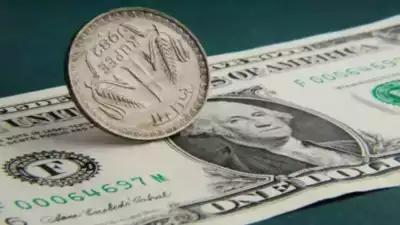RBI Governor Faces Currency Challenge
As the dollar strengthens globally, the Indian rupee is predicted to breach the 86 mark against the dollar this week. This situation presents the first significant challenge for RBI governor Sanjay Malhotra since his appointment last month. The strengthening dollar is expected to hinder efforts to boost GDP growth, which is anticipated to slow to 6.4% in FY25, through reduced interest rates.

Aditi Gupta, an economist at Bank of Baroda, noted in a report that the rupee has been hitting lifetime lows in recent sessions due to the strong dollar and inconsistent foreign portfolio investment (FPI) inflows. The pressure on the rupee is expected to continue in the near term, fueled by uncertainties surrounding US interest rates and government policies.
Impact on Liquidity and Interest Rates
The RBI's interventions in the forex market, involving the sale of dollars in spot and forward markets, have led to collateral damage in the form of drained liquidity and increased overnight interest rates. This scenario complicates the central bank's task of managing the economy's liquidity needs while trying to stabilize the rupee.
Global Economic Factors Influencing the Rupee
Recent data showing growth in the US labor market has led to a plunge in US Treasuries, with the 30-year bond yield surpassing 5% for the first time in over a year. This development has contributed to a global bond selloff, as investors express concerns over persistent inflation and expanding fiscal deficits, including in the US.
Standard Chartered has revised its timeline for a 50 basis points repo rate cut to April-June, citing tight rupee liquidity conditions. The bank anticipates a 50 basis points cut in the cash reserve ratio (CRR) at the February MPC meeting, in response to an expected widening of the liquidity deficit. Estimates suggest that the headline liquidity deficit could escalate to Rs 1.9-2.5 lakh crore by the end of FY25 if not addressed.
Furthermore, Standard Chartered has adjusted its dollar-rupee forecast, lowering it by 175 paise to 86.25 by March 2025. This revision reflects the RBI's increased tolerance for a stronger dollar and weaker balance of payments flows. Analysts Sonal Varma and Aurodeep Nandi of Nomura suggest that allowing some depreciation of the rupee might be a prudent strategy, considering the adverse effects of substantial FX interventions since October, including tighter banking liquidity and higher short-term rates during a period of weakening growth.
According to the October policy report, the baseline assumptions for projections included the rupee at 83.5 against the dollar in the second half of FY25. A 5% depreciation from this baseline could lead to a 35bps increase in inflation and a 25bps boost in GDP growth through short-term export stimulation, as per RBI estimates.









Comments